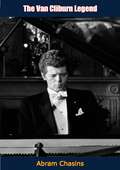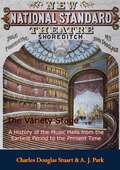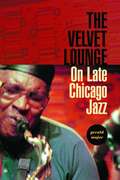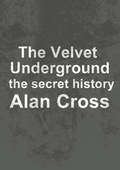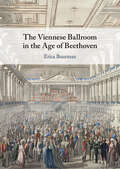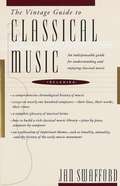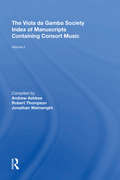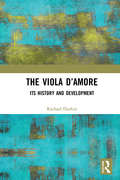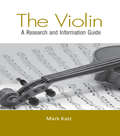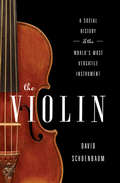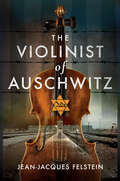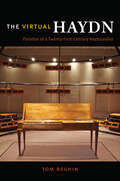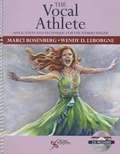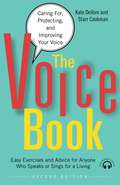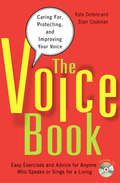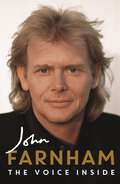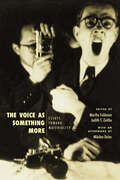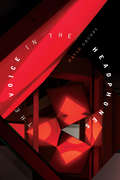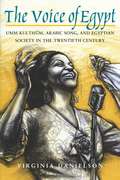- Table View
- List View
The Van Cliburn Legend
by Abram ChasinsFriend of Van Cliburn, pianist, composer, and radio executive Abram Chasins describes Cliburn's music career leading up to his win at the 1958 Tchaikovsky Competition, which made him world famous, and the year of concerts and performances which followed.—Goodreads.
The Variety Stage: A History of the Music Halls from the Earliest Period to the Present Time
by A. J. Park Charles Douglas StuartMusic hall was a type of British theatrical entertainment that was popular from the early Victorian era, beginning around 1850. It faded away after 1918 as the halls rebranded their entertainment as variety. Perceptions of a distinction in Britain between bold and scandalous Music Hall and subsequent, more respectable Variety differ. Music hall involved a mixture of popular songs, comedy, speciality acts, and variety entertainment. The term is derived from a type of theatre or venue in which such entertainment took place. In North America vaudeville was in some ways analogous to British music hall, featuring rousing songs and comic acts.“To the general reader, as well as to the thoughtful observer of the social institutions of the English people, the story of the rise, progress and present condition of Variety Stage in this country presents features of peculiar attraction.In The History of the Variety Stage they have endeavoured to deal in a bright, chatty and anecdotal manner, not only with the Music Halls of the past and present, but also with the picturesque and variegated profession which has called them into existence, and while presenting to the statistician, the antiquarian, and the student of domestic history, a substantial and painstaking work of research, they have tried to render at the same time a graphic panorama of the variety world as it was and as it is today.”-Preface.
The Velvet Lounge: On Late Chicago Jazz
by Gerald MajerTroubled urban neighborhoods and jazz-club havens were the backdrop of Gerald Majer's life growing up in sixties and seventies Chicago. The Velvet Lounge, an original hybrid of memoir, biography, and musical description, reflects this history and pursues a sustained meditation on jazz along with a probing exploration of race and class and how they defined the material and psychic divides of a city. With the instrument of a supple, lyrical prose style, Majer elaborates the book's themes through literary and intellectual forays as carefully constructed and as passionately articulated as a jazz master's solo. Throughout the work, issues of identity and culture, art and politics achieve a rare immediacy, as does the music itself.In portraits of Jimmy Smith, Gene Ammons, Sonny Stitt, Sun Ra, and others, Gerald Majer conveys the drama and artistry of their music as well as the personal hardships many of them endured. Vivid descriptions and telling historical anecdotes explore the music's richness through a variety of political, social, and philosophical contexts. The Velvet Lounge, named after the famous Chicago club, is also one of the few works to consider the music of such avant-garde jazz musicians as Fred Anderson, Andrew Hill, and Roscoe Mitchell. In doing so, Majer builds a bridge from the traditionalist view of jazz to the world of contemporary innovators, casts a new light on the music and its makers, and traces connections between jazz art and postmodernist thought. Present throughout Majer's spirited encounters with the worlds of jazz is Majer himself. We hear and appreciate the music through his individual sensibilities and experiences. Majer recounts growing up in racially divided Chicago—his trips to the famed Maxwell Street market, his wanderings among its legendary jazz clubs, his riding the El, and his working in a jukebox factory. We witness his awakening to the music at a crossroads of the intimately personal and the intellectually provocative.
The Velvet Underground: the secret history
by Alan CrossAlan Cross is the preeminent chronicler of popular music.Here he provides the history of Lou Reed and The Velvet Underground.This look at the band—"The First Alternative Band"—is based on the audiobook of the same name.
The Versatile Clarinet
by Roger HeatonFirst Published in 2006. Routledge is an imprint of Taylor & Francis, an informa company.
The Very Fairy Princess Sparkles in the Snow
by Julie Andrews Emma Walton Hamilton Christine DavenierThe Winter Wonderland Festival is just around the corner, and Gerry knows this is her moment to SHINE. She's the most enthusiastic singer around, so she's certain her music teacher will choose her to perform the solo. She takes every opportunity to show him her VERY best voice-during rehearsal, during lunchtime, and even during recess. When a professional singer is given the solo instead, Gerry is crushed...but as the snow begins to fall, she finds a way to get her SPARKLE back! The mother-daughter team of Julie Andrews and Emma Walton Hamilton adds a sparkly seasonal story to their #1 New York Times bestselling series.
The Viennese Ballroom in the Age of Beethoven
by Erica BuurmanThe repertoire of the early Viennese ballroom was highly influential in the broader histories of both social dance and music in nineteenth-century Europe. Yet music scholarship has traditionally paid little attention to ballroom dance music before the era of the Strauss dynasty, with the exception of a handful of dances by Haydn, Mozart and Beethoven. This book positions Viennese social dances in their specific performing contexts and investigates the wider repertoire of the Viennese ballroom in the decades around 1800, most of which stems from dozens of non-canonical composers. Close examination of this material yields new insights into the social contexts associated with familiar dance types, and reveals that the ballroom repertoire of this period connected with virtually every aspect of Viennese musical life, from opera and concert music to the emerging category of entertainment music that was later exemplified by the waltzes of Lanner and Strauss.
The Vintage Guide to Classical Music: An Indispensable Guide for Understanding and Enjoying Classical Music
by Jan Swafford<p>The most readable and comprehensive guide to enjoying over five hundred years of classical music -- from Gregorian chants, Johann Sebastian Bach, and Wolfgang Amadeus Mozart to Johannes Brahms, Igor Stravinsky, John Cage, and beyond. <p>The Vintage Guide to Classical Music is a lively -- and opinionated -- musical history and an insider's key to the personalities, epochs, and genres of the Western classical tradition. Among its features: <p> <li>chronologically arranged essays on nearly 100 composers, from Guillaume de Machaut (ca. 1300-1377) to Aaron Copland (1900-1990), that combine biography with detailed analyses of the major works while assessing their role in the social, cultural, and political climate of their times; <li>informative sidebars that clarify broader topics such as melody, polyphony, atonality, and the impact of the early-music movement; <li>a glossary of musical terms, from a cappella to woodwinds; <li>a step-by-step guide to building a great classical music library.</li> <p> <p>Written with wit and a clarity that both musical experts and beginners can appreciate, The Vintage Guide to Classical Music is an invaluable source-book for music lovers everywhere.</p>
The Vinyl Countdown: The Album from LP to iPod and Back Again
by Travis ElboroughVINYL MAY BE FINAL NAIL IN CD’S COFFIN ran the headline in a Wired magazine article in October 2007.Ever since the arrival of the long-playing record in 1948, the album has acted as the soundtrack to our lives. Record collections-even on a CD or iPod-are personal treasures, revealing our loves, errors in judgment, and lapses in taste.In The Vinyl Countdown, Travis Elborough explores the way in which particular albums are deeply embedded in cultural history or so ubiquitous as to be almost invisible. While music itself has experienced several different movements over the past sixty years, the album has remained a constant. But the way we listen to music has changed in the last ten years. In the age of the iPod, when we can download an infinite number of single tracks instantaneously, does the concept of the album mean anything?Elborough moves chronologically through relevant periods, letting the story of the LP, certain genres, youth cults, and topics like sleeve designs, shops, drugs, and education unfurl as he goes along. The Vinyl Countdown is a brilliant piece of popular history, an idiosyncratic tribute to a much-loved part of our shared consciousness, and a celebration of the joy of records.
The Vinyl Diaries: Sex, Deep Cuts, and My Soundtrack to Queer Joy
by Pete CrightonA poignant, funny, and lively memoir of sexual awakening, music, and discovering one's true self. Pete Crighton came of age in the early/mid 1980s in the shadow of HIV/AIDS. Growing up in Toronto, he was terrified that his friends and schoolmates would find out that he was &“different&” at a time when being gay felt like a death sentence. His only comfort was music, the songs a balm to his painful adolescence. Struggling to make sense of his sexuality and fear of the disease stifled Crighton as a sexual being. Instead of exploring sex, he began curating a massive music library. He then took what he thought was a safe path and entered into two long-term monogamous relationships, both doomed to fail. Finally, in his 40s, Crighton decided to ignore his fear and live his queer life to the fullest.The Vinyl Diaries is the story of Crighton&’s mid-life sexual awakening. From one-night trysts to friendships resulting from app-based hookups, Crighton is honest and unapologetic as he chronicles the pursuit of his erotic desires. Each new connection and lover is linked to an artist, song, or album from his vast collection and backdrops the stories Crighton tells about his life, interconnected with the artists' work and histories. Kate Bush, the B-52s, Prince, The Smiths, Yoko Ono, and Stevie Nicks are just a few of the artists who provide an extraordinary soundtrack to Crighton&’s adventures.Big-hearted, funny, thoughtful, and wildly entertaining, The Vinyl Diaries is a celebration of sex, music and the discovery of our true selves.
The Vinyl Revival, Gender, and Collecting Aesthetics (Ashgate Popular and Folk Music Series)
by Veronica SkrimsjöThe book explores record collecting and vinyl consumption in the 21st century within the context of the vinyl revival. The book highlights gender, and how gender disparity is expressed in vinyl communities.Veronica Skrimsjö considers vinyl consumerism and collecting and how the collector identifies themselves within the socio-political environment of the Global North, with a particular focus on gender. The book includes considerations of Record Store Day, DIY, and DI-together cultures, as well as the historic context needed to evaluate record collecting in the 21st century.The work is aimed at both an academic and a general readership and as such strikes a more informal tone. Personal experiences are emphasised throughout because vinyl consumers are not a homogenous group, and it is only via personal experiences that we can understand the complexity of consumption. The personal experience also helps make the content more relatable, which is crucial as old stereotypes helped distance the collector from the everyday consumer. Readers will benefit from a different perspective on record collecting and consumptions as the book highlights active, creative consumption and provides an in-depth, innovative analysis of how gender inequality is constructed within this context.
The Viola da Gamba Society Index of Manuscripts Containing Consort Music: Volume II
by Robert ThompsonVolume II of The Viola da Gamba Society Index of Manuscripts Containing Consort Music includes manuscripts associated with John Browne (Clerk of the Parliaments), Philip Falle (prebendary at Durham), Sir Gabriel Roberts, John St Barbe of Broadlands, the Withy family of Worcester and Oxford and an anonymous late-seventeenth century scribe. As well as a detailed inventory of every manuscript (with anonymous works identified where possible), the descriptions include information on date, size, binding, paper, rastra, watermarks, collations, scripts, inscriptions and provenance, together with bibliographical references. Brief notes on the owners and copyists are provided. Of particular importance is the inclusion of facsimiles of all hands.
The Viola d’Amore: Its History and Development
by Rachael DurkinThis book provides the first scholarly history of the viola d’amore, a popular bowed string instrument of the Baroque era, with a unique tone produced by a set of metal sympathetic strings. Composers like Bach made use of the viola d’amore for its particular sound, but the instrument subsequently fell out of fashion amid orchestral standardisation, only to see a revival as interest in early music and historical performance grew. Drawing on literary accounts, iconography, and surviving instruments, this study examines the origins and development of this eye-catching string instrument in the seventeenth and eighteenth centuries. It explores the rich variation of designs displayed in extant viola d’amore specimens, both as originally constructed and as a result of conversion and repair. The viola d’amore is then set into the wider context of Elizabethan England’s development of instruments with wire strings, and its legacy in the form of the baryton which emerged in the early seventeenth century, followed by a look at the viola d’amore’s own nomenclatorial and organological influence. The book closes with a discussion of the viola d’amore’s revival, and its use and manufacture today. Offering insights for organological research and historical performance practice, this study enhances our knowledge of both the viola d’amore and its wider family of instruments.
The Violin: A Research and Information Guide
by Mark KatzFirst published in 2006. Routledge is an imprint of Taylor & Francis, an informa company.
The Violin: A Social History of the World's Most Versatile Instrument
by David SchoenbaumThe life, times, and travels of a remarkable instrument and the people who have made, sold, played, and cherished it. A 16-ounce package of polished wood, strings, and air, the violin is perhaps the most affordable, portable, and adaptable instrument ever created. As congenial to reels, ragas, Delta blues, and indie rock as it is to solo Bach and late Beethoven, it has been played standing or sitting, alone or in groups, in bars, churches, concert halls, lumber camps, even concentration camps, by pros and amateurs, adults and children, men and women, at virtually any latitude on any continent. Despite dogged attempts by musicologists worldwide to find its source, the violin's origins remain maddeningly elusive. The instrument surfaced from nowhere in particular, in a world that Columbus had only recently left behind and Shakespeare had yet to put on paper. By the end of the violin's first century, people were just discovering its possibilities. But it was already the instrument of choice for some of the greatest music ever composed by the end of its second. By the dawn of its fifth, it was established on five continents as an icon of globalization, modernization, and social mobility, an A-list trophy, and a potential capital gain. In The Violin, David Schoenbaum has combined the stories of its makers, dealers, and players into a global history of the past five centuries. From the earliest days, when violin makers acquired their craft from box makers, to Stradivari and the Golden Age of Cremona; Vuillaume and the Hills, who turned it into a global collectible; and incomparable performers from Paganini and Joachim to Heifetz and Oistrakh, Schoenbaum lays out the business, politics, and art of the world's most versatile instrument.
The Violinist of Auschwitz
by Jean-Jacques FelsteinA son chronicles his Jewish mother&’s real-life efforts to save as many young women as possible from the Auschwitz gas chambers during World War II. Arrested in 1943 and deported to Auschwitz, Elsa survived because she had the &“opportunity&” to join the women&’s orchestra. But Elsa kept her story a secret, even from her own family. Indeed, her son would only discover what had happened to his mother many years later, after gradually unearthing her unbelievable story following her premature death, without ever having revealed her secret to anyone . . . Jean-Jacques Felstein was determined to reconstruct Elsa&’s life in Birkenau, and would go in search of other orchestra survivors in Germany, Belgium, Poland, Israel, and the United States. The recollections of Hélène, first violin, Violette, third violin, Anita, a cellist, and other musicians, allowed him to rediscover his twenty-year-old mother, lost in the heart of hell. The story unfolds in two intersecting stages: one, contemporary, is that of the investigation, the other is that of Auschwitz and its unimaginable daily life, as told by the musicians. They describe the recitals on which their very survival depended, the incessant rehearsals, the departure in the mornings for the forced labourers to the rhythm of the instruments, the Sunday concerts, and how Mengele pointed out the pieces in the repertoire he wished to listen to in between &“selections.&” In this remarkable book, Jean-Jacques Felstein follows in his mother&’s footsteps and by telling her story, attempts to free her, and himself, from the pain that had been hidden in their family for so long.
The Virtual Haydn: Paradox of a Twenty-First-Century Keyboardist
by Tom BeghinHaydn’s music has been performed continuously for more than two hundred years. But what do we play, and what do we listen to, when it comes to Haydn? Can we still appreciate the rich rhetorical nuances of this music, which from its earliest days was meant to be played by professionals and amateurs alike? With The Virtual Haydn, Tom Beghin—himself a professional keyboard player—delves deeply into eighteenth-century history and musicology to help us hear a properly complex Haydn. Unusually for a scholarly work, the book is presented in the first person, as Beghin takes us on what is clearly a very personal journey into the past. When a discussion of a group of Viennese sonatas, for example, leads him into an analysis of the contemporary interest in physiognomy, Beghin applies what he learns about the role of facial expressions during his own performance of the music. Elsewhere, he analyzes gesture and gender, changes in keyboard technology, and the role of amateurs in eighteenth-century musical culture. The resulting book is itself a fascinating, bravura performance, one that partakes of eighteenth-century idiosyncrasy while drawing on a panoply of twenty-first-century knowledge.
The Vocal Athlete: Application And Technique For The Hybrid Singer
by Marci Daniels Rosenberg Wendy LeBorgneThe Vocal Athlete: Application and Technique for the Hybrid Singer is a compilation of voice exercises created and used by well-known voice pedagogues from preeminent colleges, established private studios, and clinical settings. The exercises focus on various aspects of contemporary commercial music (CCM) including bodywork, mental preparation, registration, and much more. The book is designed to accompany its companion text, The Vocal Athlete-a first of its kind in singing science and pedagogy developed for singers of all styles, with a particular emphasis on CCM.. Also included is a CD of the singing exercises to further enhance understanding of techniques and skills used in training this type of singer. Both The Vocal Athlete: Application and Technique for the Hybrid Singer and its companion text are invaluable tools for anyone who uses or trains the singing voice or works with CCM singers.
The Voice Book: Caring For, Protecting, and Improving Your Voice
by Starr Cookman Kate DeVoreMore than 30 million Americans rely on their voices for their jobs—from teachers, religious leaders, and entertainers to lawyers, executives, salespeople, and doctors. A controlled voice increases self-confidence and enhances charisma, approachability, and trustworthiness. Yet an astounding 30 percent of professionals develop preventable vocal problems that could ruin their careers. And most do not know that both the quality and tone of one's voice can be changed.The Voice Book: Caring For, Protecting, and Improving Your Voice is a one-of-a-kind reference that will save and improve your voice, your job, and your personal life. With dozens of vocal exercises and a detailed guide to the anatomy and physiology of voice, the book covers the full range of vocal health, from protecting against hoarseness and laryngitis to expanding speaking range and enhancing voice tone and quality. Illustrations, photographs, FAQs, and downloadable audio tracks make this updated edition of The Voice Book a must-read for anyone who wants a dependable, strong, and engaging voice.
The Voice Book: Caring For, Protecting, and Improving Your Voice
by Kate Devore Starr CookmanWritten to save careers one voice at a time through scientifically proven methods and advice, this resource teaches people how to protect and improve one of their most valuable assets: their speaking voice. Simple explanations of vocal anatomy and up-to-date instruction for vocal injury prevention are accompanied by illustrations, photographs, and FAQs. An audio CD of easy-to-follow vocal-strengthening exercises--including Hum and Chew, Puppy Dog Whimper, Sirens, Lip Trills, and Tongue Twisters--is also included, along with information on breathing basics, vocal-cord vibration, and working with students who have medical complications such as asthma, acid reflux, or anxiety.
The Voice Inside
by John Farnham Poppy StockellAt last, the unflinching and unforgettable memoir of music and life from the much-loved Australian legend.Growing up in London and Melbourne, music was always part of John Farnham's world. But the young John never dreamed of what was to come. Pop stardom in the 1960s. The release of Whispering Jack, the critically acclaimed and highest-selling Australian album of all time. A decades-long touring career. Twenty-one ARIA awards. Australian of the Year. The list of accolades and achievements is long - so, at first glance, the John Farnham story is one filled with remarkable highs.It is, however, so much more than that. It is the story of the resilience John found as his stellar career stalled, record companies turned their backs, and he faced financial ruin. John has never shown how hard he fell and how difficult it was to stay true to himself in an industry that can be ruthless. It is the story of family, friendship and finding your voice.Throughout a lifetime filled with the highest of highs and the lowest of lows, John has remained steadfast, never losing his unique musical talent, creative strength nor his powerful ability to make human connections through his music. After his devastating cancer diagnosis and far too many goodbyes, John is now telling his story, his way.The Voice Inside is like sitting down with an old friend sharing stories that are both deeply personal and wildly entertaining. Written alongside award-winning filmmaker Poppy Stockell, this is a captivating and powerfully honest insight into the man whose music is the soundtrack to so many of our lives.'Honesty, intimacy, vulnerability - these are the traits we tend to crave from this genre. And Farnham, ably assisted by Stockell as both interlocutor and co-writer, succeeds . . . A compelling and complete memoir' THE AUSTRALIAN
The Voice That Challenged a Nation: Marian Anderson and the Struggle for Equal Rights
by Russell Freedman"A voice like yours," celebrated conductor Arturo Toscanini told contralto Marian Anderson, "is heard once in a hundred years." This insightful account of the great African American vocalist considers her life and musical career in the context of the history of civil rights in this country. Drawing on Anderson's own writings and other contemporary accounts, Russell Freedman shows readers a singer pursuing her art despite the social constraints that limited the careers of black performers in the 1920s and 1930s. Though not a crusader or a spokesperson by nature, Marian Anderson came to stand for all black artists -- and for all Americans of color -- when, with the help of such prominent figures as Eleanor Roosevelt, she gave her landmark 1939 performance on the steps of the Lincoln Memorial, which signaled the end of segregation in the arts.<P><P> Carefully researched, expertly told, and profusely illustrated with contemporary photographs, this Newbery Honor and Sibert Medal-winning book is a moving account of the life of a talented and determined artist who left her mark on musical and social history. Through her story, Newbery Medal-winning author Russell Freedman, one of today's leading authors of nonfiction for young readers, illuminates the social and political climate of the day and an important chapter in American history. Notes, bibliography, discography, index.<P> Newbery Honor book and Winner of the Sibert Medal
The Voice as Something More: Essays toward Materiality (New Material Histories of Music)
by Mladen DolarIn the contemporary world, voices are caught up in fundamentally different realms of discourse, practice, and culture: between sounding and nonsounding, material and nonmaterial, literal and metaphorical. In The Voice as Something More, Martha Feldman and Judith T. Zeitlin tackle these paradoxes with a bold and rigorous collection of essays that look at voice as both object of desire and material object. Using Mladen Dolar’s influential A Voice and Nothing More as a reference point, The Voice as Something More reorients Dolar’s psychoanalytic analysis around the material dimensions of voices—their physicality and timbre, the fleshiness of their mechanisms, the veils that hide them, and the devices that enhance and distort them. Throughout, the essays put the body back in voice. Ending with a new essay by Dolar that offers reflections on these vocal aesthetics and paradoxes, this authoritative, multidisciplinary collection, ranging from Europe and the Americas to East Asia, from classics and music to film and literature, will serve as an essential entry point for scholars and students who are thinking toward materiality.
The Voice in the Headphones
by David GrubbsThe voice in the headphones says, “you’re rolling” . . .The Voice in the Headphones is an experiment in music writing in the form of a long poem centered on the culture of the recording studio. It describes in intricate, prismatic detail one marathon day in a recording studio during which an unnamed musician struggles to complete a film soundtrack. The book extends the form of Grubbs's previous volume Now that the audience is assembled, sharing its goal of musicalizing the language of writing about music. Mulling the insight that “studio is the absence of pushback”—now that no audience is assembled—The Voice in the Headphones details one musician's strategies for applying the requisite pressure to the proceedings, for making it count. The Voice in the Headphones is both a literary work and a meditation on sound recording, delivered at a moment in which the commercial recording studio shades into oblivion. It draws upon Grubbs's own history of several decades as a recording artist, and its location could be described as every studio in which he has set foot.
The Voice of Egypt
by Virginia DanielsonUmm Kulthum, the "voice of Egypt," was the most celebrated musical performer of the century in the Arab world. More than twenty years after her death, her devoted audience, drawn from all strata of Arab society, still numbers in the millions. Thanks to her skillful and pioneering use of mass media, her songs still permeate the international airwaves. In the first English-language biography of Umm Kulthum, Virginia Danielson chronicles the life of a major musical figure and the confluence of artistry, society, and creativity that characterized her remarkable career. Danielson examines the careful construction of Umm Kulthum's phenomenal popularity and success in a society that discouraged women from public performance. From childhood, her mentors honed her exceptional abilities to accord with Arab and Muslim practice, and as her stature grew, she remained attentive to her audience and the public reception of her work. Ultimately, she created from local precendents and traditions her own unique idiom and developed original song styles from both populist and neo-classical inspirations. These were enthusiastically received, heralded as crowning examples of a new, yet authentically Arab-Egyptian, culture. Danielson shows how Umm Kulthum's music and public personality helped form popular culture and contributed to the broader artistic, societal, and political forces that surrounded her. This richly descriptive account joins biography with social theory to explore the impact of the individual virtuoso on both music and society at large while telling the compelling story of one of the most famous musicians of all time. "She is born again every morning in the heart of 120 million beings. In the East a day without Umm Kulthum would have no color. "--Omar Sharif
